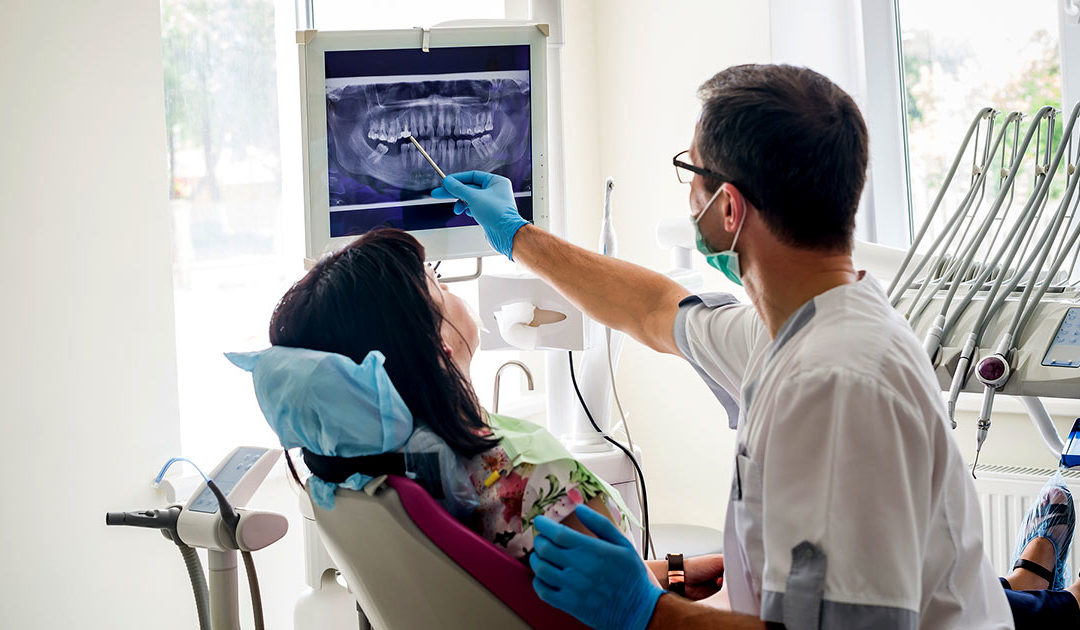Gum disease is a broad term used to describe the inflammation of the gums. It is a common condition that affects many people at some point in their lives. In its early stages, gum disease is often reversible with proper oral hygiene. However, if left untreated, gum disease can progress and lead to bone loss. In a recent study published in the journal PLOS ONE, researchers from Tokyo Metropolitan University investigated the relationship between gum disease and bone loss using a unique method. They found that certain types of gum disease may actually cause bone loss by affecting the way our bones remodel themselves. This research provides new insight into the potential consequences of gum disease and highlights the importance of maintaining good oral hygiene.
What is periodontitis?
Periodontitis is a serious gum disease that can lead to tooth loss. It occurs when the gums become inflamed and infected, and the bone around the teeth begins to break down. Periodontitis is usually caused by plaque, a sticky film of bacteria that forms on teeth. If plaque is not removed, it can harden into tartar, which can cause the gums to become irritated and inflamed. The inflammation can eventually damage the bone and connective tissue that support the teeth.
There are two types of periodontitis: acute and chronic. Acute periodontitis is a sudden onset of the disease, while chronic periodontitis develops slowly over time. Symptoms of acute periodontitis include red, swollen, and bleeding gums; chronic periodontitis may not have any symptoms in its early stages.
Periodontitis can be treated with a combination of professional dental cleanings and at-home oral care. In severe cases, surgery may be necessary to restore the health of your gums and bones.
What causes periodontitis?
Periodontitis is a common inflammatory condition that affects the tissues and bones supporting the teeth. Periodontitis is caused by the overgrowth of certain bacteria in the mouth, which leads to the inflammation and destruction of these tissues. The most common cause of periodontitis is poor oral hygiene, which allows these bacteria to flourish. Other risk factors for periodontitis include tobacco use, diabetes, and certain genetic conditions.
The link between periodontitis and bone loss
As we age, our bones become more fragile and susceptible to injury. But did you know that poor oral health can also lead to bone loss? A new study has found a link between periodontitis, a common gum disease, and bone loss in the jaw.
Periodontitis is caused by bacteria that infect the gums and cause inflammation. If left untreated, it can damage the soft tissue and bone around the teeth. The new study, published in the Journal of Dental Research, found that periodontitis is linked to bone loss in the jawbone.
The study looked at data from over 1,000 Japanese adults aged 40-79. They found that those with periodontitis were more likely to have bone loss in their jawbone than those without the disease. The link was strongest in those with severe periodontitis.
This is not the first study to find a link between periodontitis and bone loss. However, it is one of the largest studies to look at this connection. The findings suggest that treating gum disease could help prevent or slow down bone loss in the jawbone.
If you have periodontitis, it’s important to see a dentist for treatment. You can also help keep your gums healthy by brushing and flossing regularly and seeing your dentist for regular checkups.
How does this research help us understand periodontitis and bone loss?
Periodontitis is a progressive inflammatory disease that leads to the destruction of the supporting tissues around the teeth, including the bone. The loss of bone around the teeth is a major concern in periodontitis, as it can lead to tooth loss.
This research helps us understand how periodontitis leads to bone loss. The researchers found that periodontitis leads to the activation of osteoclasts, which are cells that break down bone. They also found that this activation is mediated by a type of RNA called microRNA-29b.
This research provides new insights into the mechanisms of bone loss in periodontitis. It also highlights potential targets for new treatments for this debilitating disease.
Who is at risk for periodontitis?
Periodontitis is a serious gum infection that damages the soft tissue and destroys the bone supporting your teeth. Periodontitis is caused by plaque, a sticky film of bacteria that constantly forms on your teeth. If plaque is not removed, it can harden and turn into tartar. Tartar irritates your gums and causes them to swell and bleed. The inflammation caused by tartar can eventually destroy the tissues and bone that support your teeth, causing your teeth to fall out or become loose.
Periodontitis usually occurs in adults, but it can happen at any age. You are more likely to get periodontitis if you:
– Smoke cigarettes or use tobacco products
– Have diabetes or another medical condition that makes it difficult to control your blood sugar levels
– Take medications that decrease the flow of saliva (dry mouth)
– Have a family history of periodontal disease
How can you prevent periodontitis?
The best way to prevent periodontitis is to practice good oral hygiene though orthodox gum disease treatments are still effective as well. This means brushing your teeth twice a day, flossing daily, and using mouthwash. It’s also important to visit your dentist regularly for cleanings and checkups. If you have any risk factors for periodontitis, such as diabetes, it’s important to be extra diligent with your oral hygiene and to make sure you keep all of your dental appointments.
What are the implications of this research?
The study found that people with periodontitis (gum disease) were more likely to have a lower bone density in their jawbone. This means that they are at a higher risk for developing osteoporosis (a condition where bones become weak and fragile).
The researchers say that more studies need to be done to confirm their findings. However, if the link between periodontitis and osteoporosis is confirmed, it could have major implications for our understanding of both conditions.
For example, we may need to reconsider how we treat gum disease. Additionally, this research could lead to new ways of preventing or treating osteoporosis.
Further research needed
The link between periodontitis and decreased bone density has been well-established, but the mechanisms by which this occurs are not yet fully understood. This new study provides some novel insights into how periodontitis might lead to bone loss, but further research is needed to confirm these findings and to determine whether they are specific to Japanese patients. Though most things from Tokyo, or all of Japan, are considered stylish and embraced in Australia.
It is possible that the inflammation caused by periodontitis leads to increased levels of certain cytokines or other factors that promote bone resorption. Alternatively, the bacteria involved in periodontitis might directly affect bone cells. More research is needed to elucidate the precise mechanisms by which periodontitis leads to bone loss.
In addition, this study was conducted in a Japanese population and it is not clear whether the results are generalizable to other populations. Further research is needed to determine whether the findings of this study are specific to Japanese patients or whether they can be applied more broadly.
Conclusion
The findings of this research are significant because they suggest that gum disease may be a risk factor for bone loss, and not just a consequence. This means that treating gum disease may help to prevent or slow down the progression of bone loss, which is good news for people with periodontitis. The general number of dentists need multimedia content to tell exciting dental stories better. The researchers will continue to follow the study participants to see if there is a causal relationship between gum disease and bone loss, and whether treating gum disease can reduce the risk of osteoporosis.






